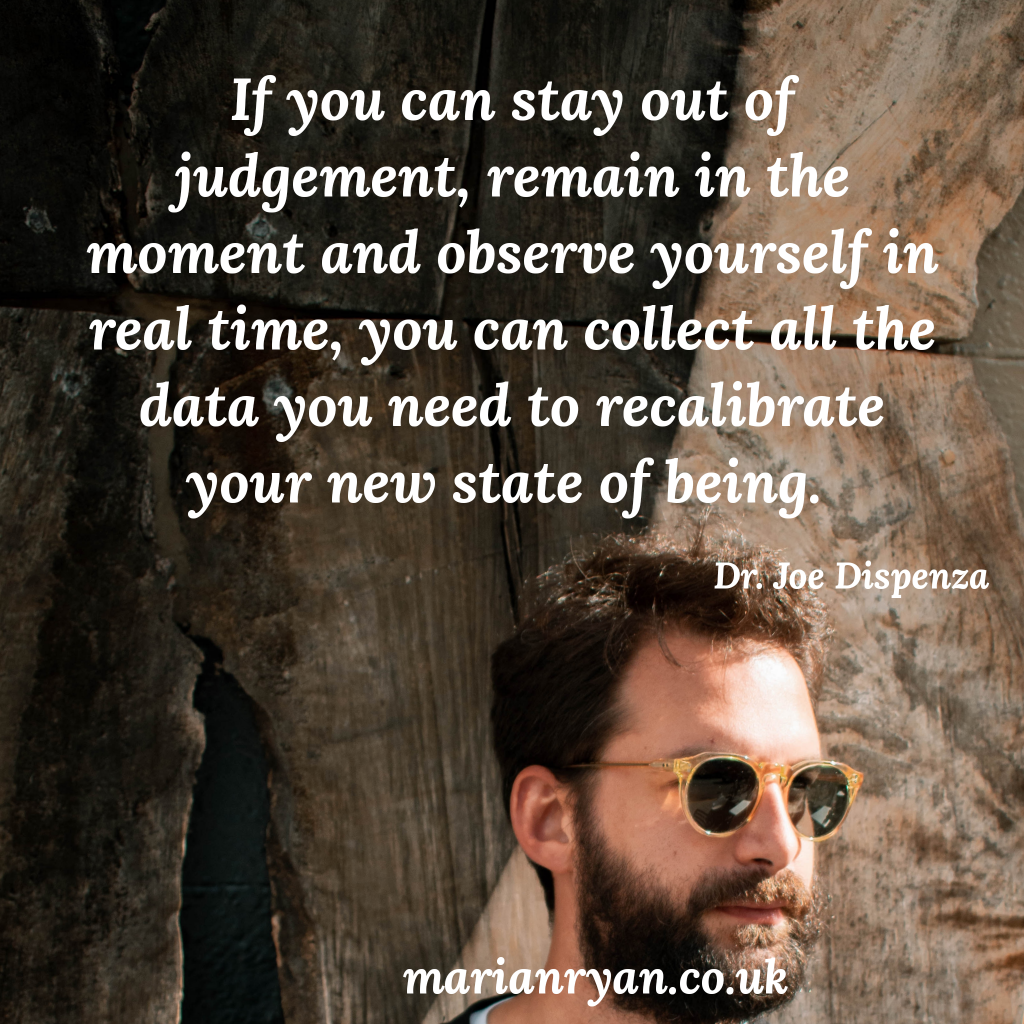We are sensory beings, and as such, we are continuously interacting with the world around us as our internal environment is constantly interpreting our external environment. Every feeling, every emotion, and thought changes us within, influencing how we react or respond to life’s events.
Change Is Constant
Not only are we constantly changing, but so too is the world around us. Fashion and technology are perfect examples of ‘this ever-changing world in which we live in’. And while the world is constantly changing, there’s no denying the fact that right now, there seems to be so much hard and fast fear-based change happening on a global scale. It appears as if the world as we know it seems to be collapsing around our ears, leaving us feeling very vulnerable and overwhelmed.
Hardwired To Resist
While we’re naturally designed to adapt to change, we seem to be hardwired to resist it. Researchers at Harvard University found that while most people can look back on life and acknowledge and accept that they’ve changed substantially in the past decade. Still, they then rate as extremely low their likelihood of changing much in the decade to come.
Yet, biologically we are constantly changing. For example, we shed between 150,000 to 300,000 thousand cells per second. Yes, per second! That’s a lot of change happening within us at every given moment in time. As we change, so too do our perceptions. We know from Dr. Bruce Lipton, developmental biochemist, that as soon as we change our perceptions, we rewrite the chemistry in our bodies.
Uncertainty

Change triggers uncertainty and, for some, an instant loss of control. Uncertainty is a natural part of the human experience. Some people thrive in uncertain times; others become emotionally paralysed, while others feel stressed, agitated and confused. “When a person reacts to something in their environment, there’s a 90-second chemical process that happens in the body; after that, any remaining emotional response is just the person choosing to stay in that emotional loop.
According to neuroscientist Dr. Huberman, the stress, agitation and confusion we feel when we undertake a new project or start something new contributes to a ‘growth mindset’. He refers to this as the ‘entry point’ or the ‘gateway’, and says ‘once you get through this point, you start to feel low levels of joy in the process’. But we need to find ways of getting through this point and as we already know, ‘we can’t solve problems using the same kind of thinking’, therefore we need to change how we deal with what we face.
New Attitude
There can only be one solution to any problem; a change in attitude and consciousness.
Gregg Braden
Instead of analysing change, which we can’t technically do because as soon as we’d start analysing, it would already be a very different situation; maybe we should look for signs of progress as we move through change. A great way of approaching this would be to identify ‘whished for changes’, which helps us focus on the desired outcomes and helps avoid resistance to change.
We also know that resisting change is futile because it will happen whether we like it or not. When we shift our perspectives from ‘challenges of change’ to ‘opportunities through change’, we’re putting ourselves back in the driving seat and influencing change instead because ‘wherever our thoughts are, that’s where our energy is.’ We can do this by Imagineering the best possible outcomes.
Four Simple Steps
Sometimes it’s difficult to know what outcomes we want when faced with change, especially when feeling stressed, agitated and confused. Therefore, it helps if we can take the necessary steps to help us peacefully adapt to and move through, change and we know from neuroscience that our body is naturally designed to do so.

It’s through the chaos that we find our creativity and Dr. Jill Bolte Taylor tells us ‘I keep a handy list of three things available for me to turn my consciousness toward when I am in a state of need: 1) I remember something I find fascinating that I would like to ponder more deeply, 2) I think about something that brings me terrific joy, or 3) I think about something I would like to do.’
So, go ahead and turn your consciousness toward whatever you desire most in life. Be the change you wish to see and be in the world.
According to Dr. Joe Dispenza the four simple steps to ‘recalibrating your new state of being’ are: –
- Set a firm intention: – In the universe there is an immeasurable, indescribable force which shamans call intent, which is responsible for all of creation and absolutely everything that exists in the entire cosmos is attached to it by a connecting link. You can access the power of intention through your heart centre. Merely taking your awareness to your heart centre, or placing your hands on your heart centre and setting the intention that you’re connecting with the power of intention will help bring you into harmony with it.
- Use your senses: – We are sensory beings, we feel first then we think. How we feel will determine how we think. Use all your senses to imagine yourself experiencing the outcome you desire. How do you feel, and how do you see yourself experiencing this? Are there any vibrational sounds or smells, or is there a taste associated with your experience?
- Imagineer a new way of being: – Imagine your desired outcome, experience its reality in this present moment in time. When we combine a thought, a feeling, a visual image and an emotion, we override any hardwired thoughts and conditioned emotions we may have and cause our body to respond to our mind. Doing so helps change our belief systems at a more effortless and much faster rate, and as such, we alter our state of being.
- Heighten your emotions: – Every time you make the decision to believe in your future, and you do so with a heightened level of energy, you’re sending out a big signal that creates big ripples in the quantum field. If you keep doing it enough times, you’re conditioning your body to a new mind. It helps to open your heart in gratitude as if you’re already living the desired outcome. Gratitude vibrates at a very high frequency, which helps broadcast your intention further into the quantum field.
Ripples In The Quantum Field
Our body responds instantly to whatever our brain sees. And our subconscious mind does exactly what we tell it to do; we just need to take the time out of our day to direct our thinking rather than leave it on autopilot. Rather than letting our thoughts rule our lives, it helps if we can direct our thoughts in the area we wish to go. Remembering that we are sensory beings and our energy creates ripples in the quantum field; when we combine a thought, a feeling, a visual image and a heightened emotion, we create the environment of our choice and as it’s the environment that signals the gene. As a result, we’re biologically identifying with our new personality and becoming our new future ahead of the event. As a result, our brain is wiring and firing our new way of being ahead of the event.
‘Being’ The Change
When we embrace change, we become more creative and become more optimistic. Optimists have a positive view of the future. Neuroscience and psychology tell us when we expect positive outcomes, and we’re more likely to get them. Equally, when we expect adverse outcomes, that’s also what we’re likely to get. As an optimist, we believe we have the power to make a situation better, as we believe that when one door closes, another door opens. As a result, we’re more open to change and find we can do so with great enthusiasm.
While change might seem painful at the moment, it’s worth remembering that the old structures that no longer serve us are what are falling away; this is necessary to make room for a new life and a new way of being, preferably one that supports humanity and respects the planet.


Thank you Marian and a good reminder to embrace the changes and to focus on what you want. xx
Yes, it’s worth remembering that where our focus goes, energy flows.